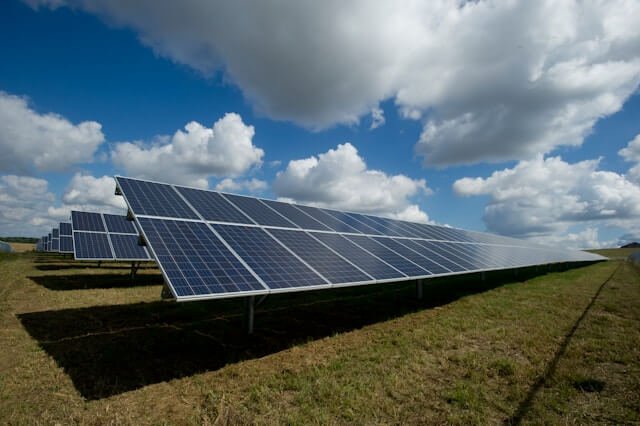Recently, Umeme exited Uganda, giving way to the government’s UEDCL (Uganda Electricity Distribution Company Limited). However, while the organization came with promises of better service delivery and cheaper electricity, the reality so far has been somewhat patchy, with shortages and what some claim to be “abnormal exhaustion” of their prepaid “light” tokens. This has got many Ugandans thinking about renewable sources of energy they can resort to, solar in particular. On my end, the trend has inspired this article; after all, it has always been said that inspiration comes in the most unexpected of places.
So, let’s talk about renewable energy in Uganda; what it really is, why it matters, and whether it could be the game-changer we all hope for.
What is Renewable Energy in Uganda?
In simple terms, renewable energy refers to energy generated from natural resources that are replenished naturally—think sunlight, wind, water, biomass, and geothermal heat. Uganda is blessed with all these resources in abundance, yet the country’s energy sector has largely been dominated by hydropower, which accounts for around 80% of electricity generation.
But here’s the thing: hydropower, while renewable, isn’t without its flaws. Climate change, unpredictable rainfall, and infrastructure limitations can mess up supply. That’s why the conversation is slowly shifting towards solar, biomass, wind, and even geothermal, renewable energy options that can diversify Uganda’s energy mix and create a more resilient power system.
Why It’s Time to Go Green
Uganda’s energy story is one of opportunity, but also challenges. About 50% of the population has access to electricity, but reliability is a major issue, especially now with UEDCL’s recent struggles. Power outages, load-shedding, and the infamous “ghost tokens” are pushing more people to explore off-grid solutions.
Here’s why investing in renewable energy makes sense for Uganda:
Energy Security and Reliability
Let’s face it, depending too much on one source of energy is like putting all your eggs in one basket. Hydropower is great when it rains, but what happens during droughts? Diversifying Uganda’s energy mix with solar, biomass, and wind can reduce the country’s vulnerability to such shocks. It means fewer blackouts and a more resilient power system.
As of 2020, about 42% of Uganda’s population had access to electricity, with only 5% enjoying clean cooking facilities. The Ministry of Energy and Mineral Development (MEMD) reports that electricity consumption represents a mere 2% of the primary energy demand. Hydropower is the backbone of Uganda’s electricity generation, boasting a total capacity of 84% – In-Depth Analysis of Uganda’s Renewable Energy Initiatives
Cheaper Power in the Long Run
Yes, setting up solar panels or a biogas system isn’t pocket change, but once they’re in place, they can slash your electricity costs dramatically. No more “abnormal token exhaustion.” For communities in rural Uganda, mini-grids powered by solar can provide access to affordable, reliable energy without relying on the national grid at all.
Job Creation and Economic Growth
The renewable energy sector isn’t just about the environment, it’s also an increasingly growing job market. From solar installers to maintenance technicians and engineers, there’s a wide range of opportunities that could benefit Uganda’s youthful population. In fact, expanding renewables could help create thousands of new jobs, especially in rural areas where unemployment rates are high.
Cleaner Environment, Healthier Lives
Let’s not forget the climate change crisis. Uganda is already feeling the heat, quite literally. Shifting to renewables like solar and wind means fewer carbon emissions, cleaner air, and a healthier environment. This also ties into better public health: relying less on charcoal and firewood for cooking, for example, reduces indoor air pollution, which is a major cause of respiratory diseases in Uganda.
Lighting Up Rural Uganda
Rural areas in Uganda have some of the lowest electrification rates. The grid simply doesn’t reach everyone, and extending it is expensive. But here’s the beauty of renewables: they don’t need a massive grid to work. Solar home systems and mini-grids can bring electricity to the most remote villages, empowering communities to access modern services like lighting, refrigeration, and even internet connectivity.
What’s Holding Uganda Back?
Of course, it’s not all sunshine and rainbows; investing in renewable energy has its challenges:
- High upfront costs: While solar and other renewables pay off in the long run, the initial investment can be steep for many Ugandans.
- Limited technical expertise: Uganda needs more skilled workers to install, maintain, and repair renewable energy systems.
- Policy bottlenecks: The Energy Policy for Uganda (2023) lays a strong foundation, but there’s still a lot of red tape and slow implementation.
- Grid integration: Scaling up renewables requires smart grids and modern infrastructure, which Uganda is still working towards.
For the average Ugandan, investing in solar panels, biogas systems, or energy-efficient appliances could be the first step toward energy independence. For businesses and entrepreneurs, exploring opportunities in the renewable energy space could unlock new revenue streams.
The Truth About Digital Literacy and Skilling in Uganda: Are Our Youth Ready?




